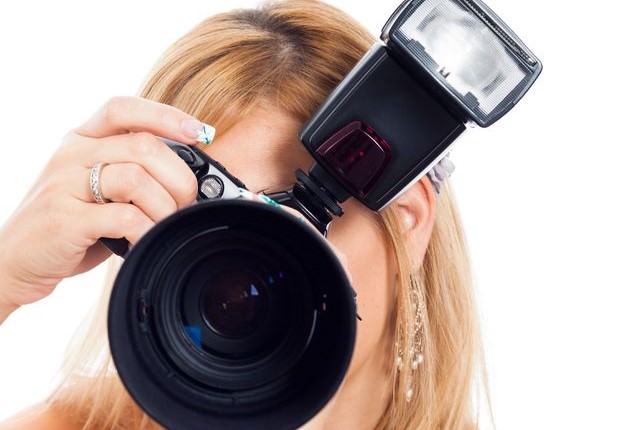 Perhaps you're at a party or museum and you want to take a picture, but there's not very much available light. You turn on your built-in flash and take a shot only to find your friends faces are so bright you can't even tell they have noses. On-camera flashes often wash out subjects and cause you to lose detail in addition to only lighting the foreground and leaving the background in shadow. Luckily, there are several ways to overcome this glaring flash effect.
Perhaps you're at a party or museum and you want to take a picture, but there's not very much available light. You turn on your built-in flash and take a shot only to find your friends faces are so bright you can't even tell they have noses. On-camera flashes often wash out subjects and cause you to lose detail in addition to only lighting the foreground and leaving the background in shadow. Luckily, there are several ways to overcome this glaring flash effect.
Decrease Shutter Speed
The slower your shutter speed, the more light enters the camera, allowing you to capture photos in dimmer settings. While this is perhaps one of the easiest solutions, it has two negative drawbacks. The first is motion blur caused by your subject. If your subject is moving and you have a really slow shutter speed, your subject will appear blurry in the resulting image. So if you have to use a slow shutter speed, make sure your subject can stand still for a moment. The second issue is motion blur caused by you, the photographer. Typically your shutter speed is fast enough that any shake caused by hand-holding the camera is negated. However, with a slow shutter speed, this shaking may blur the image.
There are two ways to help prevent this shaking. One is to find a solid surface or tripod to shoot from. Not everyone will be carrying a tripod with them, but a table or park bench will work in a pinch. If you must hand-hold your camera, make sure you shutter speed is greater than 1/the focal length of your lens. So if you have a 50mm lens, make sure your shutter speed no less than 1/50th. This typically keeps images sharp.
Increase Aperture Opening
The aperture is the eye of your lens, and just like the pupil in your own eye, the wider the opening, the more light that comes in. The f-number of your lens will determine your aperture opening. Big numbers like f/22 mean that the aperture is closed down to a very small opening. Small numbers like f/2.8 mean that the aperture is open very wide. Most lenses are advertised by their max aperture rating so that you know how “fast” the lens is. Lenses with wider max apertures can let in more light, allowing you to capture dimly lit scenes with faster shutter speeds.
There is a side effect of changing the aperture which is neither inherently good or bad, but can work to your advantage or disadvantage depending on your scene and the image you want to capture. With a small aperture opening, like f/22, most or all of the scene will be in focus. The wider you open the aperture, the less your scene will be in focus. This narrow focus, or depth-of-field, will allow you to take photos that keep your main subject in focus and blur the background of the image, however, this may not always be what you are after. So even though you can open your aperture to let in more light, remember that it also decreases your depth-of-field.
Increase ISO
The ISO setting on your camera is a determinant of how sensitive your sensor is to light. So the higher your ISO, the more sensitive your sensor, and the more light is absorbed. The advantage to changing the ISO is that you don't have to change your aperture or shutter speed settings. So if you're in a position where changing your shutter speed would result in a blurry image or changing your aperture would result in a depth-of-field that's too narrow, you could change your ISO instead. The disadvantage of ISO is that the more you increase it, the more digital noise will appear in your image. The amount of noise will depend on a several factors including the size of your sensor, noise reduction settings, and the robustness of your camera.
Bounce the Flash
An alternative to changing your camera settings is to simply bounce the flash off of a wall or ceiling. Bounce flash creates a much more subtle, softer, and natural look than direct flash. Of course, if you have a built-in flash, this may not be the most practical option. For those of you with pop-up flashes, there are several accessories available that attach to your camera and bounce the flash up with a mirror or other reflective surface. The effectiveness of bounce flash will be determined by the surface off of which you are bouncing it. A large, smooth, light-colored surface works best as it will provide a bright, but soft lighting. Obviously this alternative is situational. You won't always be inside or next to a large surface, but when you are, try it out.
Written by Spencer Seastrom
Image credit: janmika / 123RF Stock Photo
